Where is the Facebook advertising system more advanced than Google?-Facebook Vs Google
Why is Facebook a sturdy advertising company with a market value of eighth in the world?

According to financial report data, Facebook’s revenue in the Q1 of 2020 was US$17.737 billion, an increase of 18% year-on-year; net profit was US$4.902 billion, an increase of 102% year-on-year; operating profit in the first quarter was US$5.893 billion, an increase of 78% year-on-year .
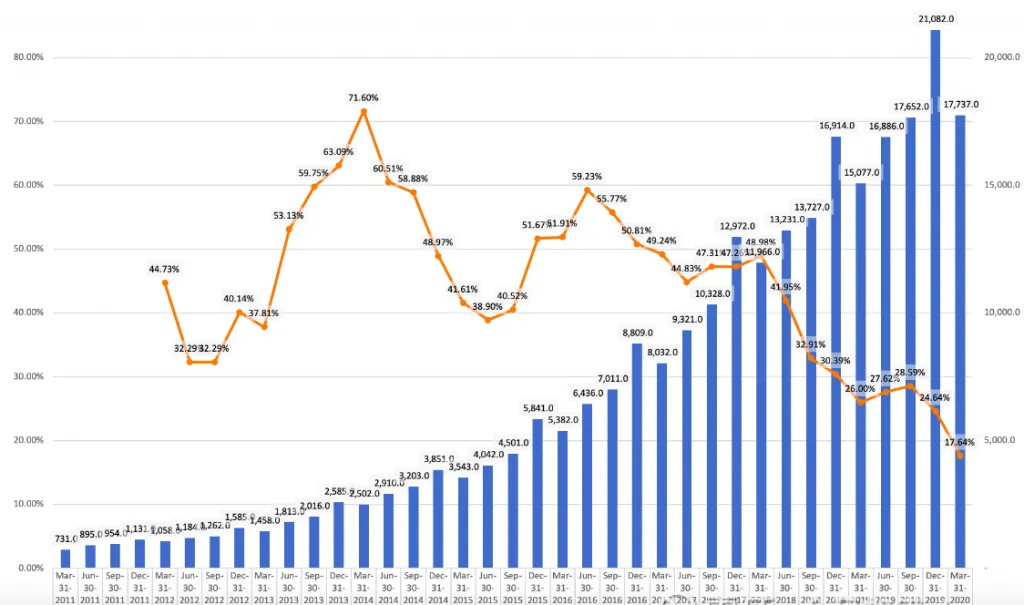
What kind of power supports Facebook as the eighth largest technology company? In my opinion, on the surface, this valuation is given to a great social company, but in essence, it is an affirmation and long-term optimism for FB’s mobile advertising platform. There are two core figures that explain all this: 97% of FB revenue comes from advertising, and 80% of advertising revenue comes from mobile advertising.
In the Internet age, Google is an information retrieval efficiency company, born to save people’s time; while Facebook is a time killer of social networks, born to overdraw people’s social time; from this economic perspective, Facebook is human The contribution is far inferior to Google. However, from the point of view of the degree of innovation in advertising technology, Facebook has surpassed the conservative Google company, bringing new advertising forms and experiences to advertisers and users. Why is Facebook great?
Share a few simple points of view
1. Successful layout of the advertising pyramid for mobile advertising
2. Invented mobile feed ads to promote mobile advertising
3. Counterattack of mobile video advertising
First of all, Facebook can quickly and vigorously deploy in the mobile advertising market.
In this regard, Facebook is actually faster than Google, and Google is still greedy for the aura of PC. Last time, I proposed a pyramid model of an advertising platform. Let’s take a look at how Facebook is at all levels of the pyramid and how to steadily and quickly deploy.
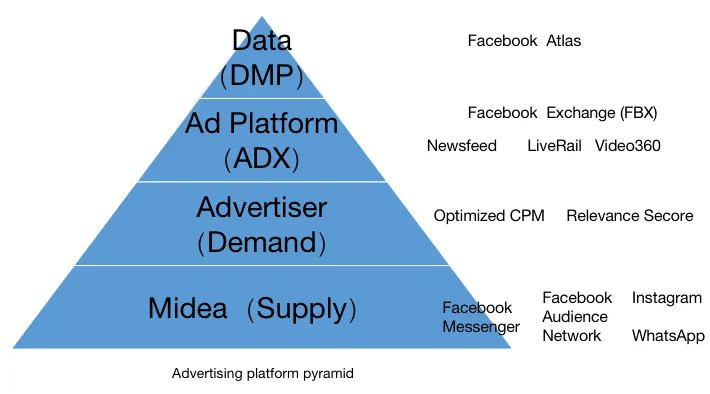
1.Media hierarchy. Facebook focuses on the mobile market. In addition to the Chinese market, many mobile devices have built-in Facebook mobile terminals. In addition, for non-self-owned applications, Facebook provides the Facebook Audience Network SDK, similar to Google’s AdMob, which can be quickly integrated into multiple large-scale applications, especially some games and tool-type software.
2.Advertiser level: Many advertising platforms get rich quickly through the acquisition of advertising agencies or DSPs, and Facebook is more willing to follow technical principles and attract more advertisers through technology and data. Facebook has done a very good job. Currently, Facebook has more than 2.5 million advertisers. Although most of them are mid-to-long-tail advertisers, and many of them are hundreds of dollars in advertising costs, they accumulate little and become a tower, and become the backbone of Facebook’s long-term stable development. In a state where the development of search advertising is basically stagnant, mobile social advertising is the first choice of advertisers, and brand advertisers are more willing to try various new ways of playing Facebook, such as video 360.
In terms of advertiser service, Facebook is still a small step on the difficult road of CPA billing. Everyone knows that when the media is strong, advertising billing usually uses CPM billing, such as portal sites such as Yahoo or Sina; Google promotes billing to CPC billing, advertising platforms are responsible for clicks, advertisers are responsible for conversions, and each perform its own duties. For strong advertisers and weak media, such as e-commerce, games, the billing method is often CPA, and e-commerce divides sales into CPS. CPA billing is the ultimate demand of advertisers, especially performance advertising. Therefore, many advertising companies (including Google) have tried, but after all, various reasons cannot expand and promote.
On the road of CPA, Facebook proposed an Optimized CPM billing method. The system can automatically adjust the delivery strategy according to the conversion of Action, but use CPM billing when charging, so that advertisers can get the cost under controllable costs. More Action, not simple and extensive Click or Impression. You know, in Facebook’s CPC billing, Click not only includes clicks to enter the Landing Page, but also includes various likes, comments, etc., and does not enter the Landing Page’s Click, so only 30-60% of j billing clicks are OK Enter the ad page.
3.Advertising technology platform: Facebook has its own AdExchange called Facebook Exchange (FBX). In addition, it also promotes various innovative advertising forms based on information flow. Among them, video ads are also very popular. Video ads are even counterattacking YouTube’s advertising market share, which will be discussed in detail later.
4.Data: Data is the apex of the advertising pyramid, and not many platforms can get real and reliable data. Although advertising platforms of all sizes in the world claim to be able to understand users, there are very few companies that can really understand users. Therefore, every company on the market claims to have user data, but the basic data of these users is often inaccurate and one-sided.
Facebook has a great advantage in this field, because its data comes from users’ high-reliability fillings, and it also has reliable social networks and interactions. These real data provide a great deal for advertising. Value-added services. In particular, Facebook also acquired Altas. This company is a veteran DMP. In addition to wired data, there are also offline data, including credit card transaction data of some users, which helps Facebook build a highly credible user Numbers provide online and offline complementarity.
After Atlas was acquired by Facebook, it still operates as an independent entity. Facebook, as a super partner, has closer cooperation.
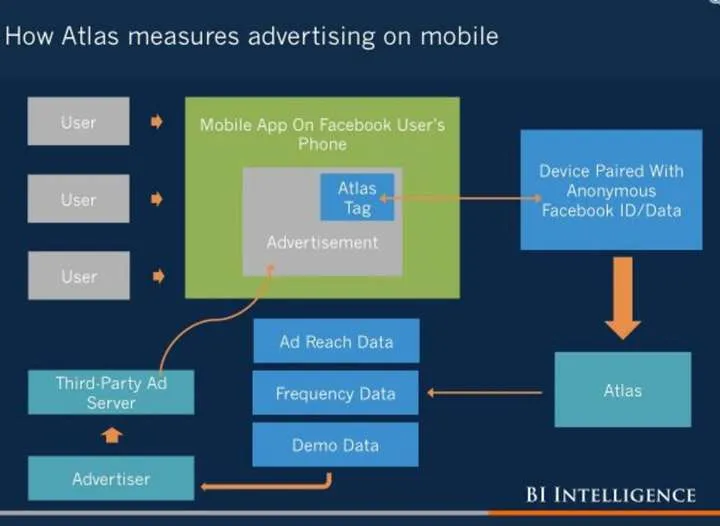
Second, Facebook invented News Feed Ads to activate mobile advertising
In the early days of mobile advertising, most of the advertising formats were banner ads, which looked ugly, resulting in an obvious sense of violation in many application interfaces. Advertisers are unwilling to vote for Banners, users are unwilling to watch Banners, and developers are unwilling to end Banner ads, so Banner ads are getting narrower and narrower. In the process of standardizing the display of information flow, Facebook also incorporates the display of advertisements, and adopts a uniform style to make the entire experience more seamless, and the advertisements also have interesting titles and content. So everyone likes it. This form of advertising quickly became popular, and even commercial browsers are boldly used and explored.
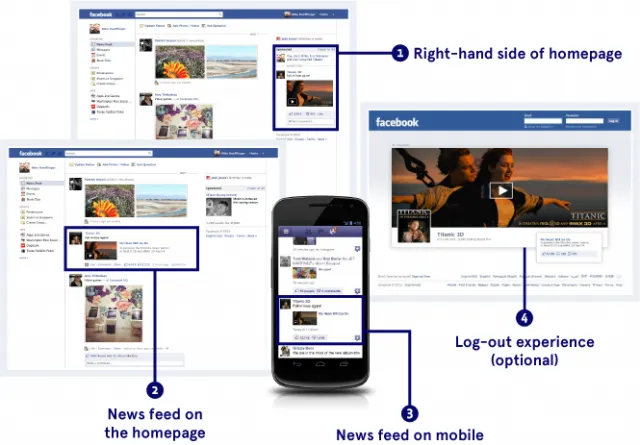
Information flow advertising has 2 characteristics
- Native experience: the form of the advertisement and the content are the same, and there is no sense of violation
- Dynamic location: Fixed advertising space has a ripple effect. As time goes by, the effect diminishes. Therefore, many advertising product managers are pondering these two issues. It requires a higher level of overall product design, which is more difficult to do.
Therefore, many advertising product managers are pondering these two issues, making the ads more native and more scene-oriented. In addition, the location dynamics requires a higher level of overall product design, which is more difficult to do.
Third, Facebook redefined video advertising
When it comes to video advertising, Google’s Youtube is indeed a pioneer and has achieved the largest user volume. Many technical definitions of video advertising are based on the implementation of Youtube. Google has also set a very high standard/threshold for video advertising promotion. For example, in the TrueView video advertisement launched by Youtube, the advertiser’s fee will only be charged when the video is played for more than 30 seconds or after it has been played. In addition, users can choose Skip video after 5 seconds of playing the video. The long-term purpose of this model is to encourage advertisers to develop beautiful video ads, and to avoid invalid advertising expenditures.
How to break through in this situation?
In 2014, Facebook technically acquired LiveRail. LiveRail is a video technology company with a lot of American media resources and user targeting data. Facebook uses existing technology and market to quickly enter the video advertising market. If there is a breakthrough in video advertising, the information flow is still the magic weapon for results. Inserting video advertisements in the information flow makes Facebook’s video penetration rate extremely high, which is an overnight fame. In addition, in the information flow, video advertisements are automatically played silently. No need to click, no horizontal screen, this mode is more similar to the TV broadcast mode, easier for advertisers to understand. In terms of video views in 2015, Facebook is quietly counterattacking Youtube. The number of Facebook video views that have been launched for more than a year has reached about 2/3 of YouTube. You must know that Youtube has worked hard for more than 10 years to accumulate to the current level.
In addition, in the charging mode of video advertisements, if the length of video playback exceeds 3 seconds, it is charged. The usual video advertisement length is 15 seconds. This ensures the profitability of the advertising platform, and the 15-second length also greatly reduces the production cost of video advertisers.

In addition, in the form of video advertising, at the end of 2015, Facebook launched the video 360 function, which allows the video to be viewed in a 360-degree panoramic view, allowing the video to be interactive. Many brand advertisers have begun to produce related videos, and the cost is not high. Many brand advertisers have begun to try out video 360 marketing, including AT&T, Corona, Nestlé, Le Biscuit, Samsung and Disney. The effect is said to be surprisingly good!
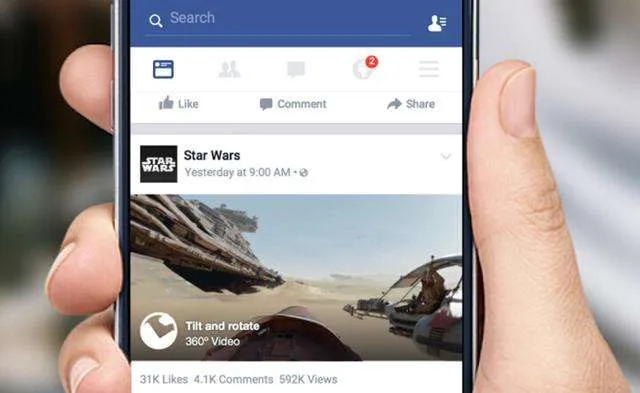
Finally, to summarize, Facebook is a social company on the surface, but it is actually an advertising company. Facebook’s investment in VR is also a bold exploration of the future social model and advertising model. The overall cost of advertising and marketing in the world is roughly the same, but the proportion of marketing distribution changes with the development of technology, from traditional TV media to Internet eyeballs, from traditional PC search to all-time mobile information flow, from simple Showing the two-way interaction, Facebook has deeply understood these changes and built its own advertising ecosystem. Facebook’s public platform with data advantages is defined as “People Based Marketing Solutions Powered by Facebook”.













